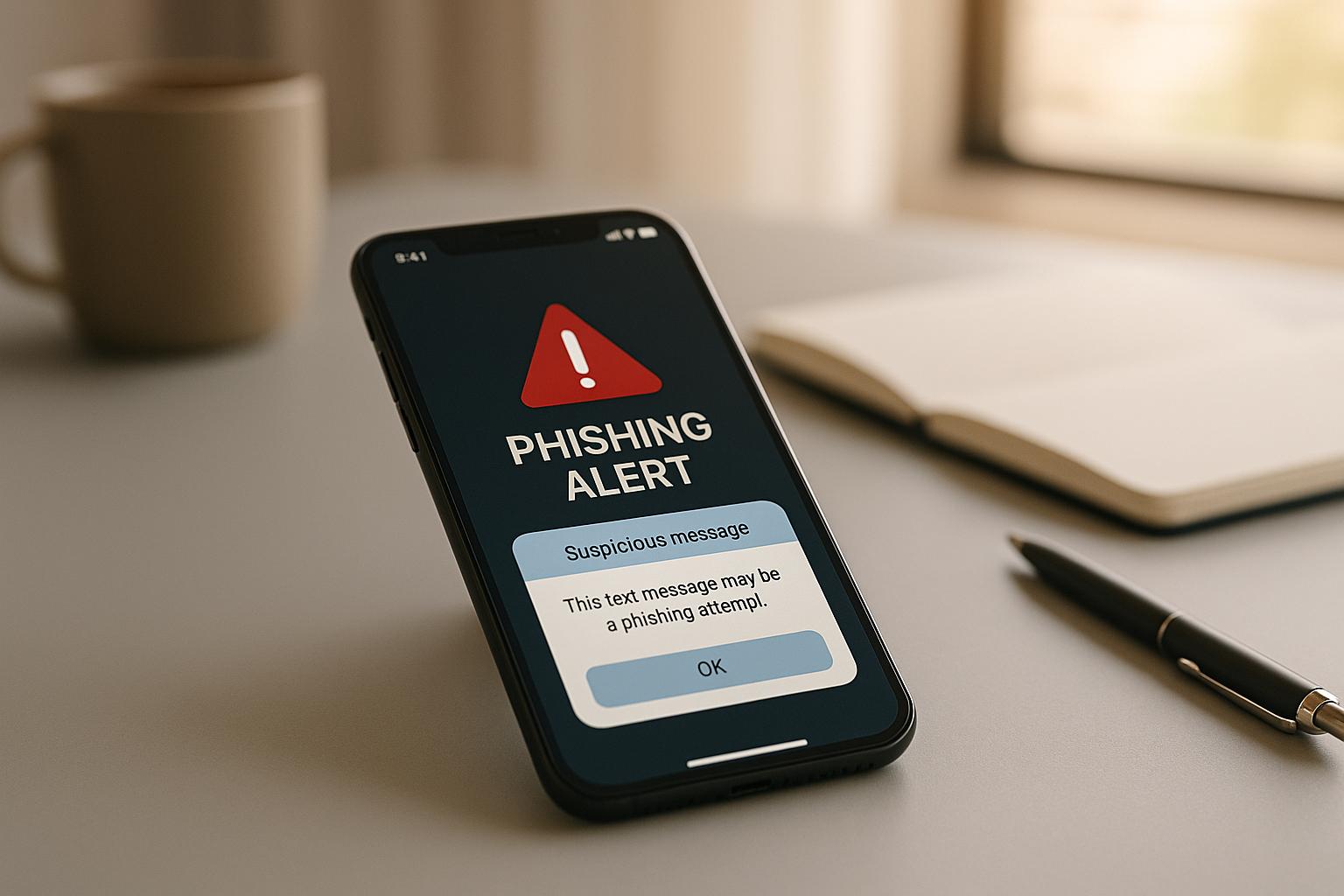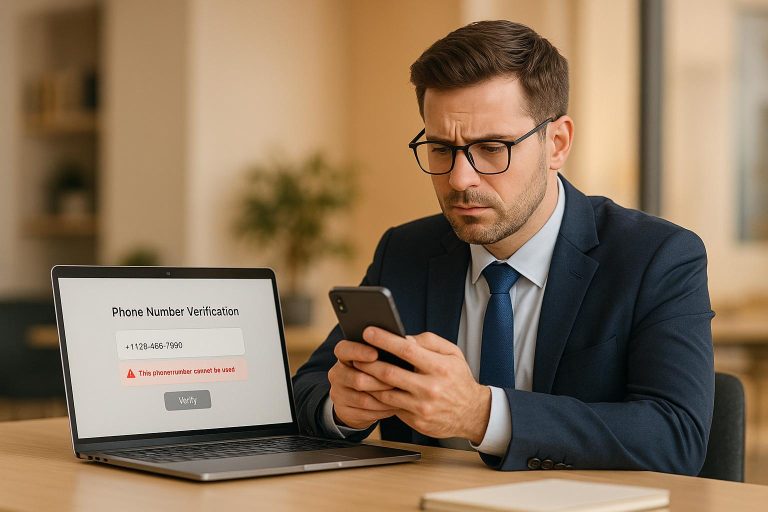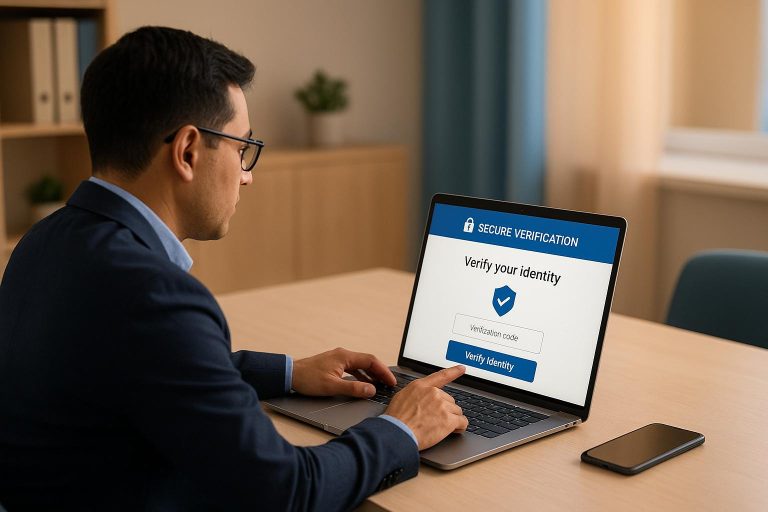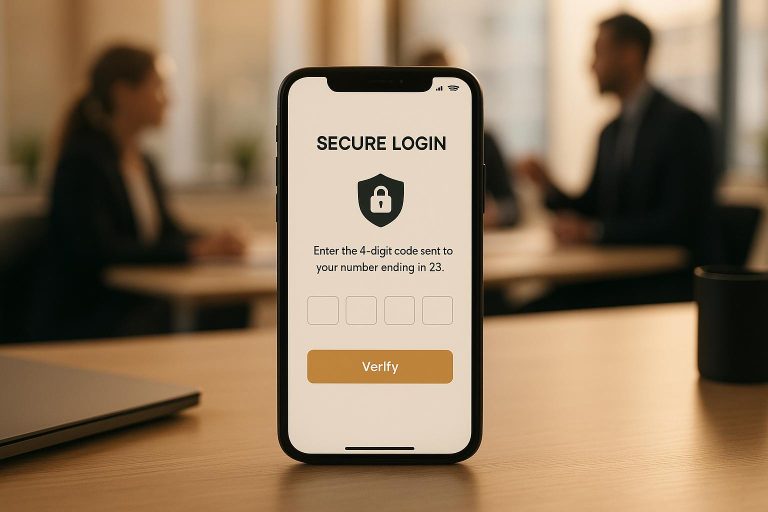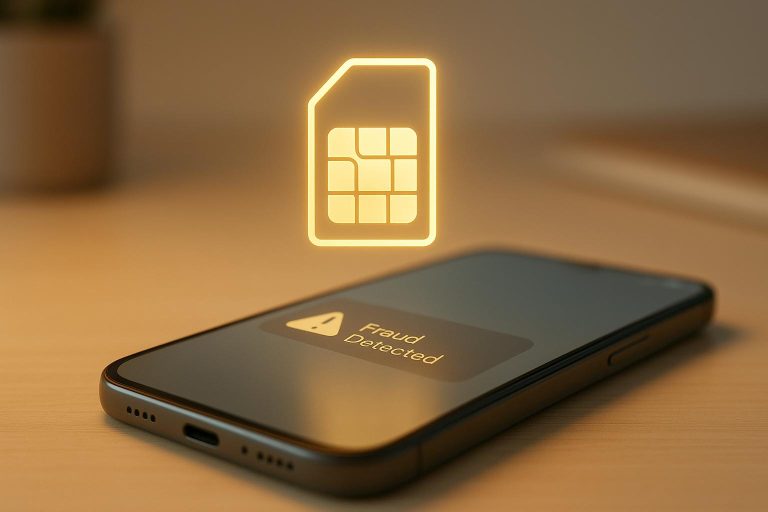How To Mitigate SMS Phishing Risks
SMS phishing, or "smishing", is one of the fastest-growing cyber threats. Attackers use fake text messages to steal sensitive information, distribute malware, or trick people into sending money. In 2023, 75% of businesses reported smishing attacks, with some incidents costing companies over $9.5 million per breach. Here’s how you can protect yourself and your organization:
- Use Mobile Device Management (MDM): Secure devices with encryption, strong passcodes, and remote data-wiping capabilities.
- Install Spam Filters: Block suspicious messages and malicious links in real-time.
- Train Employees: Teach your team to spot phishing attempts through regular security training and simulated exercises.
- Verify SMS Sources: Always check the sender’s number and avoid clicking on unknown links.
- Work with Phone Carriers: Report suspicious texts and collaborate with carriers to block fraudulent messages.
- Use Private Numbers: Opt for dedicated, secure numbers for business communications to reduce spoofing risks.
- Monitor SMS Activity: Track patterns to identify unusual behavior and respond quickly to threats.
Key stat: Over 415 million fraudulent texts are sent daily in the U.S., making vigilance crucial. Combining technical tools, employee awareness, and strict verification practices can significantly reduce your risk of falling victim to smishing.
smishing (SMS phishing)
Setting Up Technical Protection
Effective technical defenses can stop SMS phishing in its tracks, preventing harm before it begins. These measures work hand in hand with broader organizational strategies to combat SMS phishing threats.
Using Mobile Device Management (MDM) for Security
Mobile Device Management (MDM) tools safeguard every device connected to your company network by monitoring SMS traffic for suspicious activity and blocking harmful content. The National Cybersecurity Center of Excellence explains:
"The main goal behind using an MDM solution is to ensure that devices are in a more secure state before allowing access to corporate resources" [2].
MDM solutions enforce encryption, require strong passcodes, and provide secure access. They also allow IT teams to remotely lock or wipe compromised devices, reducing the risk of sensitive data falling into the wrong hands. As one cybersecurity expert notes:
"MDM helps organizations ensure that information on users’ devices, especially devices that are lost or stolen, does not fall into the hands of cyber criminals" [3].
To strengthen your defenses further, establish strict access control policies that only permit connections from devices meeting your company’s security requirements.
Installing Spam Filters and Message Monitoring
SMS filtering tools are another layer of protection, automatically analyzing and blocking suspicious messages and links in real time. Mobile Threat Defense solutions take this a step further by identifying and stopping harmful attachments and malicious URLs. Regular auto-updates ensure these tools remain effective against evolving threats. For added security, ensure your systems enforce password protection on devices and restrict access to secure networks [4].
Working with Phone Carriers for Protection
Phone carriers play a key role in combating SMS phishing, but their systems aren’t foolproof. A January 2025 test revealed that 1,000 malicious URLs sent via SMS to major carriers were delivered without issue, highlighting the scale of the problem. In September 2023 alone, 19.2 billion spam texts were sent, making SMS phishing the top cyber threat in the United States [20, 23].
Paul Walsh, a security expert, advocates for a stronger approach:
"It’s time for mobile operators, regulators, and security vendors to adopt a Zero Trust approach to web links" [5].
"Treat every SMS link as malicious until proven otherwise" [5].
In a Zero Trust model, carriers would authenticate links in real time, blocking or flagging any unverified URLs. They could also replace suspicious links with secure redirects or warning messages. Collaboration between businesses and carriers is crucial for improving defenses. Many carriers now offer services to verify the sources of SMS messages, and businesses should actively report suspicious texts to their IT teams and appropriate authorities to support these efforts.
Training Employees to Recognize Threats
Teaching employees to identify potential threats is a cornerstone of SMS phishing prevention. As highlighted earlier, technical safeguards are crucial but not foolproof. Human awareness fills the gaps, turning your team into an active defense against cybercriminals.
Running Regular Security Training
Regular training sessions equip employees with the knowledge to recognize SMS phishing tactics and respond appropriately. These sessions should focus on common red flags, like urgent requests for personal information, suspicious links, or messages impersonating trusted organizations.
Training materials should stay up-to-date. For instance, smishing attacks surged by 328% in 2020, with 76% of businesses targeted that year [8]. A notable example is the European Central Bank‘s 2019 breach, where a smishing attack exposed over 481,000 email addresses and contact details [8].
Make these sessions relatable by using examples that reflect real phishing attempts within your industry. Combine various teaching methods – presentations, interactive workshops, and hands-on exercises – to cater to different learning styles and keep employees engaged. Incorporate simulated phishing exercises to test how well employees apply what they’ve learned in real-time scenarios.
Testing Employees with Fake Phishing Messages
Simulated phishing exercises are a practical way to assess employees’ ability to recognize threats. These controlled tests involve sending fake phishing messages to staff and analyzing their responses to pinpoint areas for improvement.
Use realistic phishing examples and set clear objectives for these exercises. Testing isn’t just a security measure – it’s a high-value investment for organizations of all sizes.
"Simulated phishing represents one of the highest-ROI security investments available to small and medium businesses today." – Nathaniel C. Gravel, CISA, CISM, CRISC, Gray, Gray & Gray, LLP [6]
Provide immediate feedback to employees who fall for these simulations, offering additional training tailored to their needs. Present these exercises as learning opportunities rather than punitive measures. This approach fosters a supportive environment, helping employees enhance their detection skills and reducing the overall risk of phishing incidents.
Building a Security-Aware Workplace
Creating a workplace where employees feel confident questioning suspicious messages requires ongoing effort. The goal is to make cybersecurity a natural part of everyday work life.
Encourage a no-blame culture where employees can report suspicious messages without fear of repercussions [7]. When staff feel safe reporting potential threats, organizations can respond quickly and prevent larger issues. Celebrate successes, like employees who consistently identify phishing attempts or demonstrate strong security habits, to reinforce positive behavior [7].
Keep employees informed with regular updates. Sharing recent phishing examples targeting your industry or organization helps maintain awareness and vigilance. The numbers highlight the need for this shift: only 32% of organizations currently offer smishing simulations, and a Lloyds TSB study found that just 18% of participants could correctly identify fake emails and texts [8].
Encourage employees to report phishing attempts – even if they’ve already interacted with them – so your organization can respond quickly and protect others [7]. Establish simple, clear reporting protocols, ensuring everyone knows who to contact and what information to provide. By making reporting easy and accessible, you can strengthen your defense against SMS phishing and create a culture of shared responsibility for cybersecurity.
sbb-itb-070b8f8
Improving SMS Verification Security
Strong SMS verification practices are a key defense against phishing attacks targeting business communications. While employee training raises awareness, technical verification measures offer tangible protection against advanced spoofing attempts.
How to Verify SMS Message Sources
Verifying SMS messages starts with checking the sender’s phone number. Ensure the number matches one you recognize from previous legitimate communications. If you’re unsure, avoid clicking on any embedded links. Instead, visit the company’s official website or contact them directly using a verified phone number or email address [9].
Legitimate organizations tend to use consistent communication methods. If you receive an unexpected SMS – like a bank requesting account verification when they typically contact you via email or phone – treat it as suspicious [9].
To add another layer of protection, establish clear internal communication protocols. Prohibit employees from sharing sensitive business information through unverified messaging services. This policy helps safeguard against targeted smishing attacks [8].
Beyond verifying senders, using private numbers can further strengthen your defenses against spoofing.
Using Private Numbers for SMS Verification
Private numbers offer a stronger shield against spoofing compared to shared or recycled numbers. By using dedicated numbers, businesses can avoid risks tied to previously compromised accounts.
Dedicated numbers provide consistent security advantages. Unlike temporary numbers that frequently change, private lines allow businesses to build trusted communication channels with clients and service providers. This consistency makes it easier to spot unusual messages that deviate from normal patterns.
JoltSMS, for example, provides secure, non-recycled SIM-based U.S. numbers tailored for business verification. These numbers remain private throughout the rental period, with carrier-grade SIM hardware ensuring 99.9% delivery reliability across over 1,000 platforms.
Private numbers also enhance privacy. They act as a barrier against data breaches and unwanted tracking, reducing the chances of businesses falling victim to phishing campaigns [10][11].
Connecting SMS Verification to Team Tools
Integrating SMS verification with team tools can complement your technical safeguards and employee training initiatives. By linking verification systems to team communication platforms, businesses can centralize security monitoring and respond to threats more efficiently. Real-time notifications ensure verification codes and alerts reach the right team members without delay.
JoltSMS supports webhook integration, which allows incoming codes to be posted instantly to Slack or Discord channels. This setup enables security teams to monitor verification activities across various accounts from a single dashboard. Data is accessible in real time through a dashboard or REST API, providing flexibility for customized workflows.
Automation reduces human error. When SMS codes are automatically routed to designated team channels, there’s less risk of codes being missed, shared insecurely, or accessed by unauthorized individuals.
To avoid overwhelming your team, customize notifications by creating dedicated Slack or Discord channels for specific purposes. For instance, separate channels for banking verifications, cloud service access, and customer account management can help keep communications clear and organized. Regularly review integration performance and gather team feedback to fine-tune the system, ensuring it effectively streamlines security processes and flags suspicious activity for quick action [12].
Monitoring SMS Activity and Response Plans
Beyond technical safeguards and employee training, keeping a close eye on SMS activity and having a solid response plan in place are crucial for catching phishing attempts early and reducing their impact.
Tracking SMS Patterns for Threats
Keeping tabs on SMS activity can help identify unusual patterns that might signal a phishing attempt. Monitoring tools analyze messages to detect and stop potential cyberattacks quickly [14].
In early 2024 alone, over 963,000 unique phishing sites were flagged globally. Smishing attacks targeted 76% of businesses within a year, leading to a staggering 328% rise in such incidents [16][15].
Some red flags to watch for include messages from unverified numbers and unexpected requests for sensitive information, like passwords or Social Security numbers. Always check links by hovering over them to ensure the URL is legitimate [1].
Advanced SMS security tools use algorithms to identify and block suspicious messages by analyzing patterns and spotting irregularities. Mobile threat defense solutions can even prevent malicious texts from reaching employees’ devices in the first place [4].
If something feels off about a message, assume it’s suspicious. Microsoft Support emphasizes:
"The best defense is awareness and knowing what to look for."
Once you spot something unusual, follow clear response procedures to contain the threat quickly.
Creating Response Plans for SMS Attacks
Having a well-thought-out plan for handling SMS phishing incidents can significantly reduce their impact. A strong incident response plan should be practiced ahead of time, as quick action is key to minimizing harm [13].
Set up simple and clear reporting processes that employees can use without delay. Offer immediate feedback on the steps being taken and provide alternative reporting options in case standard channels are compromised [13].
For example, one financial firm with 4,000 employees was able to block nearly all phishing emails, limiting breaches to just a few isolated cases [13].
Define specific steps for handling incidents, such as when to reset passwords or assign malware removal tasks. This ensures employees can recognize unusual requests and respond appropriately [13].
Encouraging a positive reporting culture is also important. When employees feel comfortable flagging suspicious messages, they act as an early warning system for potential threats [13].
Regularly practice incident response with simulated exercises, and continually refine your strategies to stay ahead of new threats.
Updating Security Measures for New Threats
SMS phishing tactics are constantly evolving, so it’s essential to keep your security measures up to date. Adjust filtering rules to account for new patterns, and review blocked messages regularly to improve detection methods.
Simulated phishing tests can help uncover weaknesses in your defenses. Use the insights gained to update your response plans.
Stay informed about emerging threats by consulting industry security reports and threat intelligence sources, like updates from the FBI’s Internet Crime Complaint Center. Refresh employee training materials frequently to cover the latest phishing tactics, and review your technical tools annually to ensure they remain effective in protecting your business communications.
Building Strong SMS Phishing Defenses
To effectively combat SMS phishing, a multi-layered approach is essential. No single solution can provide complete protection, so combining technical safeguards, employee education, and secure verification practices is crucial to creating a strong security framework.
The numbers tell a concerning story. In 2021, smishing attacks surged by 700% [19]. By 2023, 75% of organizations reported encountering such attacks, with victims losing an average of $800 per incident [20]. These stats highlight the growing need for comprehensive defenses.
The Role of Technical Defenses
Technical measures like device management, spam filtering, and working closely with carriers form the foundation of SMS phishing defenses. These tools can block many threats before they ever reach employees, but they must be part of a broader strategy to be truly effective.
Employee Training: The Human Firewall
Human error is often the weakest link in security. That’s why training employees to recognize and respond to phishing attempts is critical. For instance, Tiryaki, a global company, implemented a continuous education program that produced impressive results: an 89% improvement in phishing detection. This initiative saved the company $10,792 annually in incident response costs and prevented potential losses of $154,616 per year.
"We trained 1,100 global employees, achieving an 89% phishing identification success rate within a year. This program bolstered our defenses and enhanced our security culture. Financially, we’ve successfully protected customer data and our reputation." – Mert Çakıcı, Security Manager at Tiryaki [17]
Secure Verification Practices
With 67% of employees expected to use personal devices for work in 2024 [20], secure verification policies are more important than ever. These policies should include:
- Prohibiting downloads from unverified sources.
- Enforcing multi-factor authentication for sensitive systems.
For businesses that rely on SMS verification, using dedicated numbers through services like JoltSMS offers an extra layer of security. These real-SIM, non-VoIP numbers integrate with tools like Slack and Discord, making it easier to monitor and manage SMS communications securely.
Real-World Success Stories
Continuous improvement is key to staying ahead of evolving threats. Take the example of a manufacturing company in Southwest Virginia. By adopting a multi-layered defense strategy, they reduced phishing messages from 5–10 per day to fewer than one per day. Their user click-through rate dropped from 28% to 6%, and the IT team slashed time spent on threats from 20 hours per month to under 5 hours [18].
Staying Ahead of Threats
The fight against SMS phishing is never over. Regularly updating training programs, conducting security assessments, and refining technical defenses are all necessary to keep your business communications and sensitive data secure. By integrating these strategies, you can build a cohesive and resilient defense against the ever-evolving threat of SMS phishing.
FAQs
What are the key warning signs of an SMS phishing attack that employees should know?
Employees need to stay alert for unusual messages from unfamiliar or suspicious numbers, especially ones that include links or URLs designed to look like legitimate websites. Be wary of messages that try to create a sense of urgency, such as warnings about account suspension or demands for immediate action. Watch for obvious errors, like poor spelling or grammar, and avoid responding to any requests for personal or sensitive information, such as passwords or financial details – these are classic signs of phishing attempts.
Educating employees on how to spot these red flags is a crucial step in shielding your business from SMS phishing threats.
What steps can businesses take with phone carriers to reduce the risk of SMS phishing (smishing) attacks?
To cut down on the risk of SMS phishing (smishing) attacks, businesses can team up with phone carriers in a few key ways:
- Use spam filters: Collaborate with carriers to roll out advanced filtering tools that catch and block harmful messages before they ever reach users.
- Create reporting channels: Set up direct ways for users to report suspicious messages, so carriers can act fast – like blacklisting scam numbers.
- Share threat data: Work closely with carriers to track and analyze patterns of attacks, which helps improve detection and prevention in real time.
By tapping into carrier infrastructure, businesses can strengthen security measures and shield users from fraudulent SMS schemes more effectively.
How can using private numbers help businesses reduce SMS phishing risks?
Using private numbers for business communications can greatly lower the risk of SMS phishing by reducing the exposure of sensitive phone numbers to potential threats. This approach helps decrease the likelihood of impersonation or malicious targeting.
Additionally, private numbers allow businesses to track and manage SMS traffic more effectively, making it easier to spot unusual activity. By prioritizing secure and private communication channels, companies can bolster their defenses against phishing attacks while ensuring greater privacy for both employees and customers.

